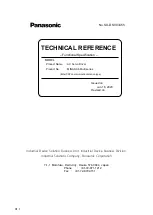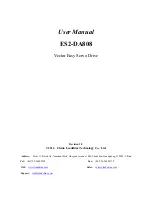
4 Operation
4.7.3 Application Example of Safety Functions
4-48
4.7.3
Application Example of Safety Functions
An example of using safety functions is shown below.
(1) Connection Example
In the following example, a safety unit is used and the HWBB function operates when the guard opens.
When a guard opens, both of signals, the /HWBB1 and the /HWBB2, turn OFF, and the EDM1 signal is ON.
Since the feedback circuit is ON when the guard closes, the safety unit is reset, and the /HWBB1 and the /
HWBB2 signals turn ON, and the operation becomes possible.
Note: Connect the EDM1 as the direction of current flows from EMD1+ to EMD1-, because the EMD1 has polarity with a
transistor output.
(2) Failure Detection Method
In case of a failure such as the /HWBB1 or the /HWBB2 signal remains ON, the safety unit is not reset
because the EDM1 signal keeps OFF. Therefore starting is impossible, then the failure is detected.
An error in the external device, disconnection or short-circuiting of the external wiring, or a failure in the
SERVOPACK must be considered. Find the cause and correct the problem.
/HWBB1
+
4
3
6
5
8
7
A1
A2
T11 T12 T21
T31 T32 T33
S24 S14
T22
/HWBB1
−
/HWBB2
+
/HWBB2
−
EDM1
+
EDM1
−
0 V
CN8
SERVOPACK
Output
24 V
Power
supply
Guard
Safety unit
G9SX-BC202
manufactured
by OMRON Corp.
Fuse
Close
Limit switch
Power
supply
input
Input
Reset/feedback
input
Open
















































